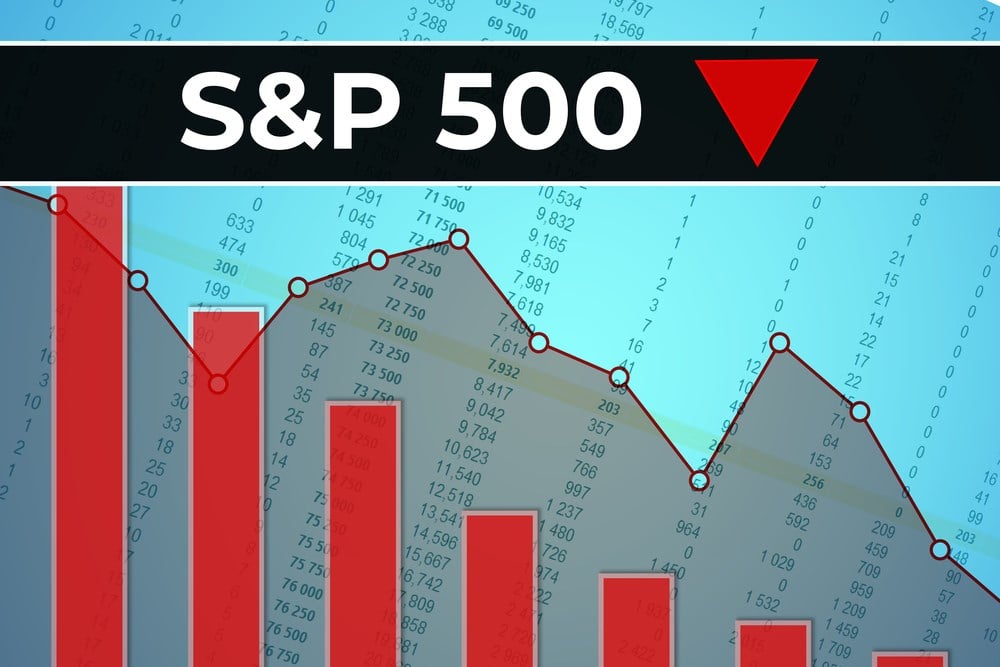
The SPDR S&P 500 ETF Trust (NYSEARCA: SPY) is trading below its 200-day line, a signal that more declines may be in the cards.
The S&P 500 rallied to a high of 4607 on July 27, before rolling over as tech, in particular, led the market lower. The index is down 6.40% in the past three months, but still maintains a year-to-date gain of 12.01%.
In addition to slicing through its 200-day average, the S&P 500 finished below the 4,200 level for the first time since May 31.
The 200-day moving average is widely regarded as a benchmark for long-term trend analysis. Institutional investors, using a combination of human analysis and algorithms, frequently step in to support a stock that’s fallen to the 200-day line if they believe it’s a value and they have long-term conviction.
However, when a stock or broader index dips below this key price line, it generally signifies a potential shift in the long-term trend. For example, take a look at the chart for SolarEdge Technologies Inc. (NASDAQ: SEDG), which sliced through its 200-day line in June and just kept falling.
A body in motion stays in motion
If you remember high school science classes, you probably learned the premise that “a body in motion stays in motion unless acted upon by an outside force.” That applies to stock market momentum, either to the upside or downside.
If you look at the SPDR S&P 500 ETF chart going back to early 2022, you can see the slide beneath the 200-day line in January. It bounced around a little bit, trying to regain the 200-day average, but gravity finally prevailed, dragging the index down in April, where it remained for essentially the rest of the year.
That’s the power of downside momentum.
Investors who closely follow technical analysis may use the breach of the 200-day line as a trigger to sell their holdings. It’s not the individual investors who make a real difference, though; it’s institutional investors who are responsible for the vast majority of trading volume.
Of course, it’s one thing for a stock to fall below its 200-day line, but quite another for an index. The latter can reflect a change in market sentiment.
Toxic stew of negative sentiment
These days, a toxic stew of higher interest rates, high bond yields, heightened geopolitical tensions, and factors such as disappointing cloud business revenue from Alphabet Inc. (NASDAQ: GOOGL) are contributing to negative sentiment. A steep cut in revenue forecasts from chipmaker Texas Instruments Inc. (NASDAQ: TXN) contributed to the daily downfall.
Trading volume is another indicator of negative sentiment. The S&P 500 volume was only slightly heavier than normal on October 25, perhaps indicating that it wasn’t yet a mad dash for the exits; however, the downside momentum is clearly there, and it wouldn’t be surprising to see turnover pick up in subsequent sessions if investors grow more pessimistic.
Here’s a potentially more upbeat way to view the action:
When an index breaches its 200-day line, it may signal a potential market capitulation. As the action reflects a loss of confidence in the index’s performance in the near- to medium term, more sellers rush in.
Watch for capitulation
Eventually, that broad market decline results in panic selling, which eventually creates opportunity for contrarian investors who seek to buy when others are fearful, anticipating the eventual, inevitable rebound.
That kind of action, to one degree or another, leads up to most new broad-market rallies.
In the meantime, keep your eye on the 4,100 level in the S&P 500, roughly the area where the index found a floor back in May. If it can hold at or above that level, there could be another buying opportunity.
In addition, watch for the progression of the 200-day moving average; the October 25 action will cause the line to decline, and that could be yet another way of understanding whether capitulation is possibly near.














